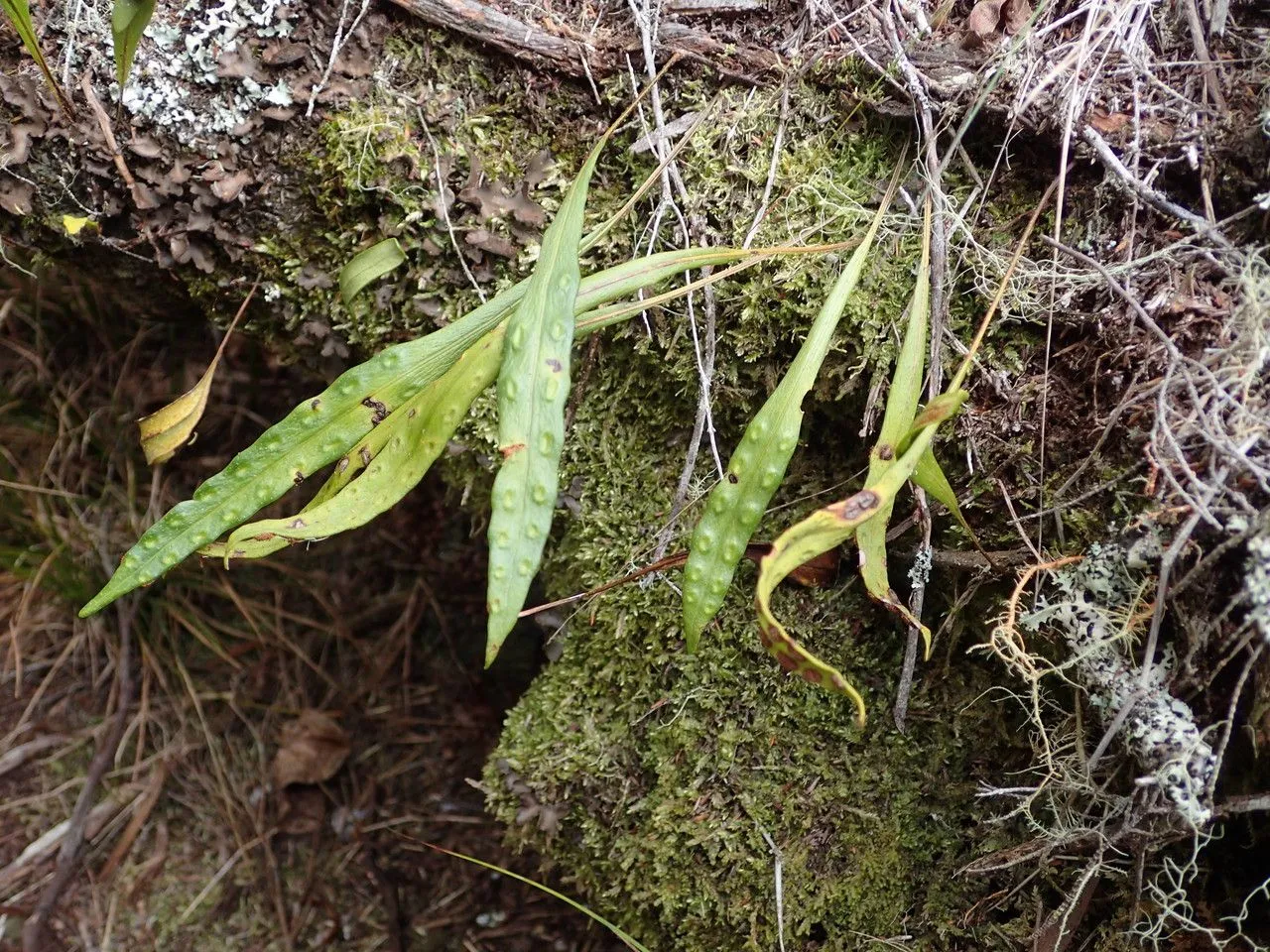
Author: Kaulf. (Bory ex Willd.)
Bibliography: Berlin. Jahrb. Pharm. Verbundenen Wiss. 21: 41 (1820)
Year: 1820
Status: accepted
Rank: species
Genus: Pleopeltis
Vegetable: False
Observations: Mexico to S. Trop. America, Trop. Africa, Arabian Pen., S. India, Sri Lanka
The Lanceleaf polypody, scientifically recognized as Pleopeltis macrocarpa, is a fascinating member of the Polypodiaceae family. This resilient fern is widely distributed across a range of geographic locales, spanning from Mexico to southern tropical regions of America, tropical Africa, the Arabian Peninsula, as well as southern India and Sri Lanka. Its presence in such diverse environments speaks to its adaptability and ecological resilience.
First classified in 1820 by the eminent botanist Friedrich Kaulfuss, with further contributions by Bory de Saint-Vincent and Carl Ludwig Willdenow, the Lanceleaf polypody has been a subject of botanical interest for centuries. It was first described in detail in the Berlin Yearbook of Pharmacy and Related Sciences.
The fern boasts elegantly elongated fronds, which give it its common name “Lanceleaf,” likely due to their lance-like shape. This unique morphology not only adds to its aesthetic appeal but also plays a key role in its survival strategy, allowing it to thrive in varied climatic conditions, from dense, humid rainforests to arid, rocky outcrops.
Its widespread presence across continents points to a plant of significant ecological importance, supporting local biodiversity and contributing to the stability of its native habitats. The Lanceleaf polypody is an enduring subject of study for botanists and ecologists, given its wide-ranging adaptability and the ecological roles it fulfills.
En: Lanceleaf polypody
Fr: Fougère gros lentilles
Taken Aug 26, 2017 by Tela Botanica − Sylvain PIRY (cc-by-sa)
Taken Aug 26, 2017 by Tela Botanica − Sylvain PIRY (cc-by-sa)
Taken Aug 26, 2017 by Tela Botanica − Sylvain PIRY (cc-by-sa)
Taken Aug 26, 2017 by Tela Botanica − Sylvain PIRY (cc-by-sa)
Taken Nov 23, 2010 by Tela Botanica − Liliane Roubaudi (cc-by-sa)
Taken Jul 2, 2022 by Trap Hers (cc-by-sa)
Taken Nov 22, 2019 by Natacha INSULAIRE (cc-by-sa)
Taken Dec 3, 2019 by acosta jennifer (cc-by-sa)
Taken Nov 23, 2010 by Tela Botanica − Liliane Roubaudi (cc-by-sa)
Taken Nov 23, 2010 by Tela Botanica − Liliane Roubaudi (cc-by-sa)
Taken Jun 24, 2018 by Hugo SANTACREU (cc-by-sa)
Taken Mar 7, 2022 by Schnittler Martin (cc-by-sa)
Taken Aug 26, 2017 by Tela Botanica − Sylvain PIRY (cc-by-sa)
Taken Aug 26, 2017 by Tela Botanica − Sylvain PIRY (cc-by-sa)
© copyright of the Board of Trustees of the Royal Botanic Gardens, Kew.
© copyright of the Board of Trustees of the Royal Botanic Gardens, Kew.
© copyright of the Board of Trustees of the Royal Botanic Gardens, Kew.
Family: Myrtaceae Author: (F.Muell.) K.D.Hill & L.A.S.Johnson Bibliography: Telopea 6: 402 (1995) Year: 1995 Status:…
Family: Rubiaceae Author: Pierre ex A.Froehner Bibliography: Notizbl. Bot. Gart. Berlin-Dahlem 1: 237 (1897) Year:…
Family: Sapindaceae Author: Koidz. Bibliography: J. Coll. Sci. Imp. Univ. Tokyo 32(1): 38 (1911) Year:…
Family: Asteraceae Author: A.Gray Bibliography: Pacif. Railr. Rep.: 107 (1857) Year: 1857 Status: accepted Rank:…
Family: Fabaceae Author: Medik. Bibliography: Vorles. Churpfälz. Phys.-Ökon. Ges. 2: 398 (1787) Year: 1787 Status:…
Family: Aspleniaceae Author: (Cav.) Alston Bibliography: Bull. Misc. Inform. Kew 1932: 309 (1932) Year: 1932…